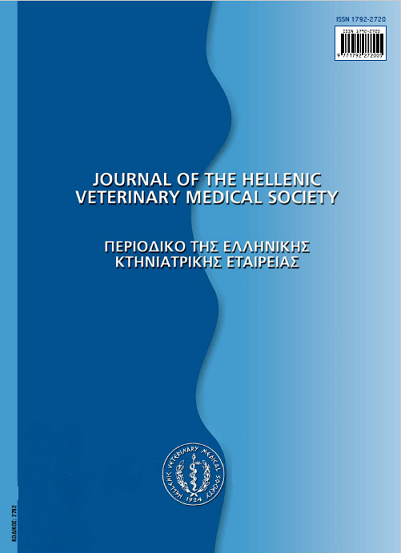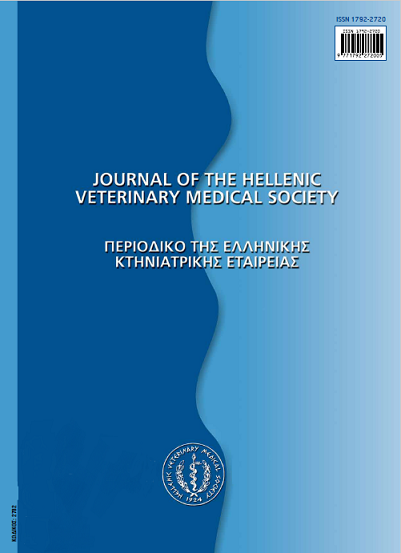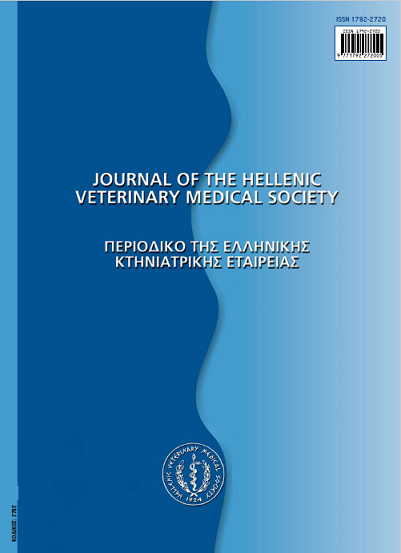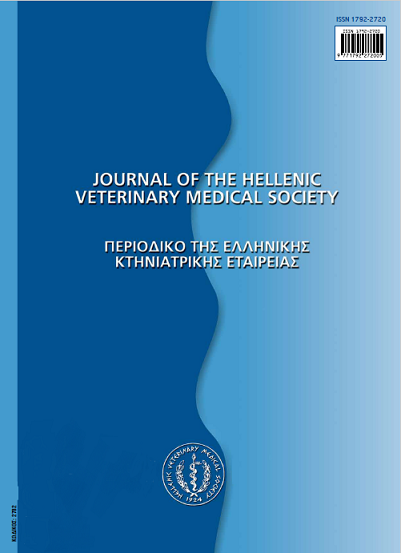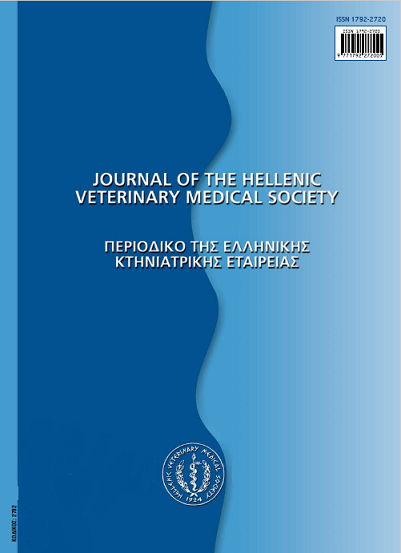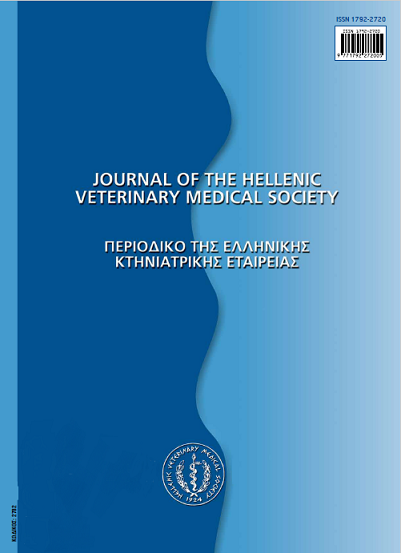Alternative treatment for proximal suspensory desmitis in the hind limb: retrospective study in seven horses
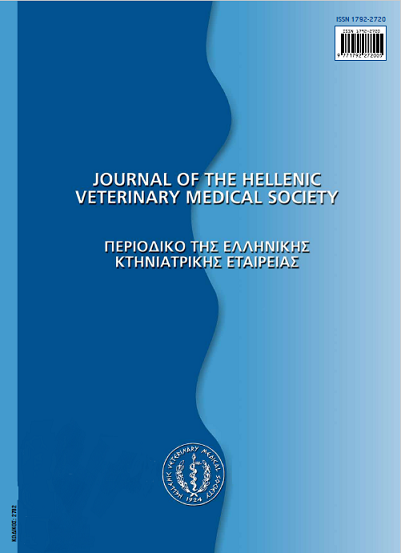
Abstract
Proximal suspensory desmitis (PSD) has become a frequently diagnosed condition commonly affecting athletic horses. In this study, seven horses with PSD in a pelvic limb were included. Definitive diagnosis was based on clinical signs, results of local anesthesia and ultrasonographic and radiographic examination. Following the initial anti-inflammatory treatment, PSD was treated with an alternative, minimally invasive method, including series of periligamentous injections containing mepivacaine hydrochloride, heparin sodium, a preparation containing natural ingredients and deproteinised haemoderivative of calf blood. Depending on the severity of each case, all horses returned to full work after 8 to 12 weeks.
Article Details
- How to Cite
-
TYRNENOPOULOU (Π. ΤΥΡΝΕΝΟΠΟΥΛΟΥ) P., & DIAKAKIS (Ν. ΔΙΑΚΑΚΗΣ) N. (2017). Alternative treatment for proximal suspensory desmitis in the hind limb: retrospective study in seven horses. Journal of the Hellenic Veterinary Medical Society, 65(4), 265–272. https://doi.org/10.12681/jhvms.15575
- Issue
- Vol. 65 No. 4 (2014)
- Section
- Research Articles
Authors who publish with this journal agree to the following terms:
· Authors retain copyright and grant the journal right of first publication with the work simultaneously licensed under a Creative Commons Attribution Non-Commercial License that allows others to share the work with an acknowledgement of the work's authorship and initial publication in this journal.
· Authors are able to enter into separate, additional contractual arrangements for the non-exclusive distribution of the journal's published version of the work (e.g. post it to an institutional repository or publish it in a book), with an acknowledgement of its initial publication in this journal.
· Authors are permitted and encouraged to post their work online (preferably in institutional repositories or on their website) prior to and during the submission process, as it can lead to productive exchanges, as well as earlier and greater citation of published work.




